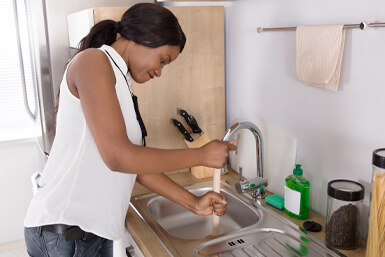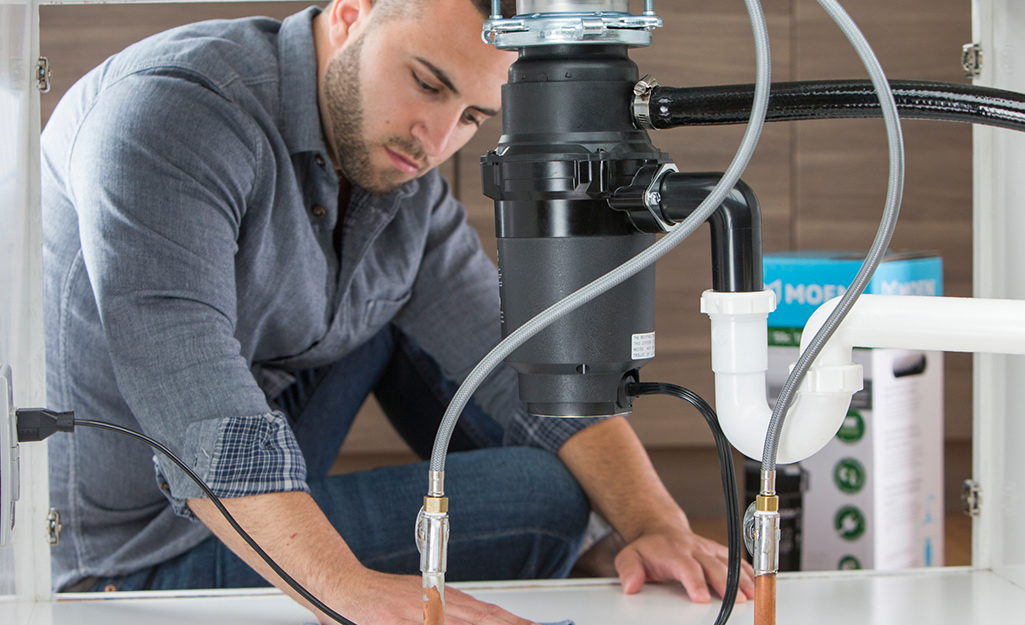The Big Blockage - 6 Causes Stalling Your Kitchen Sink's Ineffective Drainage
The Big Blockage - 6 Causes Stalling Your Kitchen Sink's Ineffective Drainage
Blog Article
We have encountered the article pertaining to What To Do When Your Kitchen Sink Won’t Drain below on the web and felt it made perfect sense to share it with you in this article.

It's not regular for your kitchen area sink to clog up numerous times in one month. If your sink blocks two times a week, there's some difficulty going on.
A blocked cooking area drain does not simply slow down your duties, it degrades your whole plumbing system, bit by bit. Below are some typical behaviors that motivate sink clogs, as well as exactly how to prevent them.
You need correct waste disposal
Reusing waste is great, however do you pay attention to your organic waste also? Your kitchen area needs to have two different waste boxes; one for recyclable plastics and another for natural waste, which can end up being garden compost.
Having a marked trash bag will certainly help you and also your family prevent tossing pasta and other food residues away. Generally, these remnants absorb wetness and also become blockages.
The mistake isn't from your kitchen area sink in all
Possibly the issue isn't from your cooking area sink, but the entire drainage system. In such a situation, you might notice that other sinks and also drains get blocked every other week. You require a professional plumbing service to repair this.
You're tossing coffee down the tubes
Used coffee grounds and coffee beans still take in a substantial amount of dampness. They might seem small adequate to throw down the drainpipe, but as time goes on they start to swell and also take up more room.
Your coffee grounds ought to go into natural garbage disposal. Whatever portion escapes (possibly while you're washing up) will certainly be cared for throughout your monthly cleaning.
You've been consuming a great deal of greasy foods
Your cooking area sink might still get blocked despite organic waste disposal. This may be since you have a diet regimen abundant in oily foods like cheeseburgers.
This oil layers the within pipes, making them narrower and more clog-prone.
Use a plunger
Your pipe wasn't repaired correctly in the first place
If you've been doing none of the above, yet still obtain routine obstructions in your cooking area sink, you should call a plumber. There may be a problem with how your pipes were installed.
While your plumber gets here, look for any kind of leakages or irregularities around your kitchen area pipes. Don't try to deal with the pipes on your own. This might trigger a mishap or a kitchen flooding.
A person attempted to wash their hair in the kitchen sink
There's a right time and also location for whatever. The cooking area sink is just not the ideal place to clean your hair. Washing your hair in the kitchen sink will certainly make it obstruct eventually unless you use a drainpipe catcher.
While a drainpipe catcher may catch a lot of the after effects, some strands may still get through. If you have thick hair, this might suffice to slow down your water drainage as well as ultimately form an obstruction.
There's more dirt than your pipelines can deal with
If you get fruits directly from a ranch, you may notice even more kitchen dust than other people that go shopping from a shopping center. You can easily fix this by cleaning the fruits as well as veggies properly prior to bringing them into your home.You require correct waste disposal
My Kitchen Sink Won’t Drain - What Should I Do?
If Your Sink Has a Garbage Disposal...
Turn on the disposal. If the disposal hums and doesn’t turn, then there’s clog in the disposal unit.
Go to your circuit breaker panel, and switch off the circuit breaker to your garbage disposal.
Back in your kitchen, double-check that your garbage disposal is off by trying to turn it on. The disposal should not move, and it should not make any noise.
Lie down underneath your sink so that you can see and access the bottom of the disposal unit. Look for a hole that looks like the head of a hex-head bolt in the center of the unit.
Place an Allen wrench inside this hole and turn it from side to side until you feel a decrease in resistance and are able to rotate the wrench completely in a single direction. This action rotates your disposal’s blade manually.
Put the wrench aside, and press the disposal unit’s reset button or switch.
Flip your garbage disposal’s circuit breaker switch back on, and turn on the unit to see if the obstruction has cleared. If it hasn’t, repeat the steps above until the obstruction is removed.
How to Unclog a Kitchen Sink Drain
If you have a double bowl sink, seal one side of the sink with an airtight lid or a second plunger before plunging the other side. Otherwise, you won’t be able to create adequate suction.
Place the cup of the plunger completely over the drain opening.
Turn on the faucet, and let the water run until it completely covers the cup of the plunger.
Start plunging by pushing the plunger down and pulling up again in order to build up suction. Make sure that the edges of the plunger stay in contact with your sink, or else you’ll lose the suction.
If you have trouble forming a seal between your sink and plunger, add petroleum jelly to the mouth of your plunger, and try again.
Plunge about five or six times before removing the plunger to see if water starts to drain properly. In some cases, you’ll even be able to feel the clog become dislodged while you plunge because suddenly there will be much less resistance. Repeat the plunging process until the clog clears.
Once water is draining properly again, run hot water down the drain for 5 minutes to help clear away grease, grime, and debris from the clog. https://www.plumbingjoint.com/blog/2019/august/my-kitchen-sink-won-t-drain-what-should-i-do-/

My Kitchen Sink Won’t Drain - What Should I Do?
If Your Sink Has a Garbage Disposal...
How to Unclog a Kitchen Sink Drain
https://www.plumbingjoint.com/blog/2019/august/my-kitchen-sink-won-t-drain-what-should-i-do-/
Do you appreciate more info about Why Is My Sink Not Draining?? Give a short review down below. We would be glad to hear your responses about this posting. We hope that you come back again in the near future. Do you know anybody else who is very much interested in Five Ways to Fix a Slow Sink Drain? Do not hesitate to share it. We take joy in reading our article about Five Ways to Fix a Slow Sink Drain.
Schedule Today
Report this page